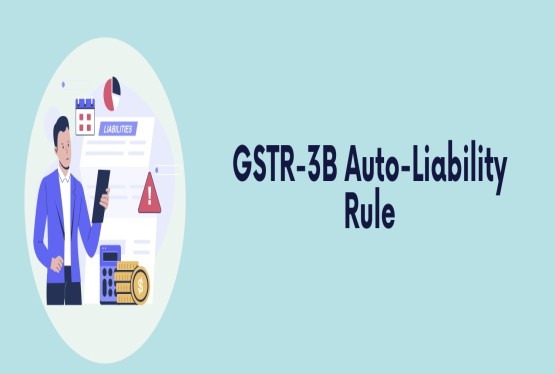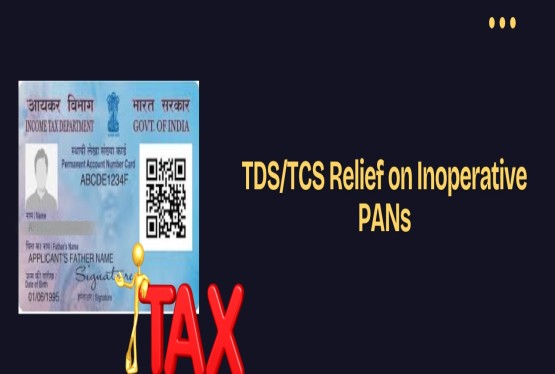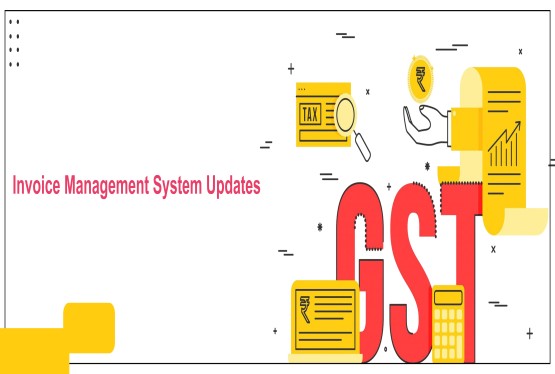The Goods and Services Tax (GST) revolutionized the Indian taxation landscape, streamlining tax processes and simplifying compliance for small businesses. To avoid penalties and maintain smooth operations, it is essential for businesses to follow proper GST regulations. This article provides a detailed GST compliance checklist tailored for small businesses in India, ensuring they remain compliant and sustain a steady cash flow.
GST Registration
Small businesses must secure GST Registration before initiating taxable operations. If the annual turnover exceeds Rs 20 lakhs (Rs 10 lakhs for businesses in Northeastern states, Uttarakhand, and Himachal Pradesh), registration is mandatory. Businesses below this threshold may also consider voluntary registration for benefits such as input tax credit and enhanced credibility. Additionally, businesses operating in multiple states must register separately in each state.
Accurate Record-Keeping
Maintaining accurate financial records is fundamental for GST Compliance. Businesses should keep detailed documentation of invoices, receipts, credit and debit notes, and tax payments. Each record should include mandatory GST details, such as GSTIN numbers and applicable tax rates. Ensure that these records are preserved for at least six years from the filing deadline of the annual return.
GST-Compliant Invoices
All issued invoices must adhere to GST guidelines. A compliant GST invoice should include:
-
Supplier’s name, address, and GSTIN
-
Recipient’s name, address, and GSTIN (if applicable)
-
Invoice number and date
-
Description, quantity, and value of goods or services
-
Applicable tax rates and tax amount
-
HSN or SAC code for goods or services
-
Place of supply for inter-state transactions
Filing GST Returns on Time
Timely filing of GST Returns is crucial. Depending on the nature of the business and turnover, different GST return forms (such as GSTR-1, GSTR-3B, GSTR-4, etc.) apply. Ensure that returns are filed within the designated timelines to avoid late fees and penalties. Utilizing GST-compliant accounting tools or consulting a tax professional can simplify this process.
Tax Payments and Input Tax Credit (ITC)
Ensure accurate calculation and payment of GST on all taxable supplies. Claim eligible ITC on purchases and expenses and reconcile ITC claims with data on the GST portal. Address any mismatches promptly to prevent penalties or denial of credit.
Verify and Update GSTIN Details
Keep your GSTIN information updated and confirm the authenticity of GSTINs for suppliers and customers. This practice reduces the risk of errors or penalties and ensures seamless ITC claims.
Periodic GST Audits
Conduct regular audits of your GST compliance. This includes reviewing invoices, returns, and financial records to identify and rectify any discrepancies. Enlist a tax professional to assist with the audit and address non-compliance issues proactively.
Reverse Charge Mechanism (RCM) Documentation
Transactions involving the Reverse Charge Mechanism (RCM), particularly with unregistered suppliers, require meticulous documentation:
-
Self-Generated Invoices: Generate an invoice for every transaction under RCM to support Input Tax Credit (ITC) claims during audits or assessments.
-
Payment Vouchers: Maintain a payment voucher for each payment made to suppliers under RCM, regardless of their GST registration status.
GST Returns and Bookkeeping Practices
Reconciliation of Financial Records with GST Returns
-
Ensure the sales turnover, credit notes, and output tax in your financial statements match the data in GSTR-1 and GSTR-3B.
-
Address discrepancies between GSTR-1 and GSTR-3B promptly, identifying and resolving the causes to prepare for assessments or audits.
Input Tax Credit (ITC) Reconciliation
-
Compare the ITC claimed in GSTR-3B with the GSTR-2B available on the GST portal.
-
Complete ITC reconciliation by November 30 of the subsequent financial year to rectify unclaimed or excess claims within the allowable timeframe.
Supplier Compliance
-
Follow up with suppliers who filed GSTR-1 but not GSTR-3B to avoid ITC disallowances. Document all communications for future reference.
-
For suppliers yet to file GSTR-1 or GSTR-3B, encourage them to do so immediately to prevent disruptions in ITC claims.
Review ITC and RCM Liabilities
-
Examine financial records for ineligible or incorrectly claimed ITC and reverse such claims where necessary.
-
Verify that RCM liabilities are appropriately reported in GSTR-3B and paid, including applicable interest if there are delays.
Addressing Pending Liabilities and Credits
Report missed output tax liabilities or credit notes for the previous financial year by November 30 or before filing the annual return, whichever is earlier. Monitor vendor payments within 180 days of the invoice date. Reverse ITC for unpaid invoices and reclaim it upon payment.
GST on Other Incomes and Asset Sales
Ensure GST is appropriately calculated and paid on other taxable incomes and asset sales. Address any unpaid GST liabilities promptly, including applicable interest.
Additional GST Compliance Considerations
1. Renewal of Letter of Undertaking (LUT)
Exporters must renew their LUT annually to continue exporting goods or services without paying IGST for the next financial year.
2. Filing GST Refund Applications
Submit refund claims within two years from the date of entitlement to avoid forfeiting refunds.
3. ITC-04 Filing
-Businesses with annual turnovers above Rs.5 crores must file ITC-04 semi-annually.
-Businesses with turnovers up to Rs.5 crores are required to file it annually.
4. QRMP Scheme
Opt in or out of the QRMP Scheme for the first quarter of FY 2024-25 by April 30, 2024.
5. Record Maintenance
Maintain accounts, records, and documentation as prescribed under GST law for future reference and audits.
Conclusion
For businesses in India, complying with GST regulations is fundamental to seamless operations and legal compliance. By implementing this comprehensive GST checklist, businesses can optimize their processes, reduce risks, and focus on growth. Meticulous attention to areas such as registration, invoicing, return filing, and ITC management ensures that businesses remain compliant while effectively managing tax obligations. With a proactive approach, businesses can navigate the complexities of GST confidently and sustain long-term success.
FAQs
Q1. What is GST compliance?
Ans. GST compliance refers to following the laws and regulations established under the Goods and Services Tax (GST) framework. This involves activities such as obtaining GST registration, issuing accurate GST-compliant invoices, maintaining proper financial records, timely filing of GST returns, and adhering to all other statutory requirements to avoid penalties.
Q2. What are the GST rules for small businesses?
Ans. Small businesses are required to comply with the following GST rules:
-
GST Registration: Businesses must register if their annual turnover exceeds Rs.40 lakhs for goods manufacturers or Rs.20 lakhs for service providers.
-
Compliance: They must issue GST-compliant invoices, file regular returns, maintain financial records, and adhere to GST provisions based on their turnover.
-
Composition Scheme: Eligible businesses with turnover up to Rs.1.5 crores can opt for the Composition Scheme to simplify GST compliance.
Q3. Is GST required for small businesses?
Ans. Yes, GST registration is mandatory for:
-
Goods manufacturers with annual turnover above Rs.40 lakhs.
-
Service providers with annual turnover above Rs.20 lakhs.
-
Businesses operating in inter-state trade or involved in e-commerce, regardless of turnover.
Q4. How can I get a GST compliance rating?
Ans. A GST compliance rating is a score assigned by the government to indicate a business's compliance with GST laws. It is determined based on:
-
Timely filing of monthly, quarterly, and annual GST returns.
-
Payment of taxes within the due dates.
-
Accurate reporting of transactions and input tax credit (ITC) utilization.
-
Compliance with GST regulations during audits and assessments.
Q5. What is the compliance verification mechanism under GST?
Ans. GST compliance verification ensures adherence to tax rules and involves:
-
Return Scrutiny: Verifying details provided in GST returns for accuracy and consistency.
-
Internal Audits: Regular audits to review the financial records and transactions of businesses.
-
Anti-Evasion Measures: Steps taken to prevent tax evasion and identify fraudulent activities.
Q6. What are the four pillars of GST?
Ans. The four pillars supporting the GST framework are:
-
CGST (Central Goods and Services Tax): Levied by the central government on intra-state supplies.
-
SGST (State Goods and Services Tax): Levied by state governments on intra-state supplies.
-
IGST (Integrated Goods and Services Tax): Applied on inter-state and international supplies.
-
Cess: Imposed on certain goods and services to fund specific purposes, such as compensation for revenue loss.
Q7. What are the components of GST?
Ans. GST consists of five main components:
-
CGST
-
SGST
-
IGST
-
UTGST (Union Territory Goods and Services Tax)
-
Cess
These components collectively structure India's complete indirect tax system.








_crop10_thumb.jpg)

















































































_for_FY_2025-26_crop10_thumb.jpg)












_learn_crop10_thumb.jpg)








_Filing_Due_Dates_for_FY_2024-25_learn_crop10_thumb.jpeg)







































_of_GST_Act_learn_crop10_thumb.jpg)










_Under_GST_learn_crop10_thumb.jpg)









_crop10_thumb.jpg)


_crop10_thumb.jpg)






_learn_crop10_thumb.jpg)






















_of_the_Income_Tax_Act_learn_crop10_thumb.jpg)



_learn_crop10_thumb.jpg)






_learn_crop10_thumb.jpg)






_crop10_thumb.jpg)




















_in_The_Income_Tax_Act,_1961_learn_crop10_thumb.jpg)



_learn_crop10_thumb.jpg)



_of_the_Income_Tax_Act_learn_crop10_thumb.jpg)


_Of_Income_Tax_Act_learn_crop10_thumb.jpg)








_learn_crop10_thumb.jpg)








_learn_crop10_thumb.jpg)
_crop10_thumb.jpg)






















_learn_crop10_thumb.jpg)
_for_Import_and_Export_learn_crop10_thumb.jpg)



























